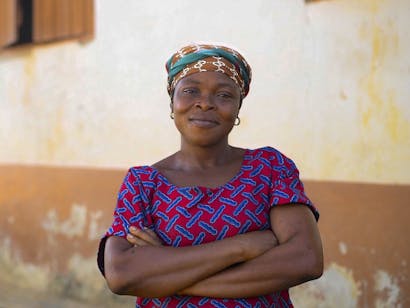Transforming Lives Through Education: The EESDAC Project in Somalia
Welcome to the heartwarming story of the Expanded Education in Emergency for Disaster Affected Children (EESDAC) project, a beacon of hope in the challenging educational landscape of Somalia. In this article, we delve into the background, objectives, achievements, and the profound impact CARE’s initiative has had on the lives of thousands of children and educators.

Addressing Educational Barriers in Somalia
The EESDAC project emerges as a response to Somalia’s complex educational challenges, marked by crises, displacement, and the persistent threat of climatic shocks. With the country grappling with issues like weak governance, the COVID-19 pandemic, and armed conflict, the education sector has been particularly fragile. Shockingly, 64% of Somali children aged 5-17 find themselves out of school, exacerbating the vulnerability of a nation already contending with a large internally displaced population (IDPs), half of whom are school-aged children. The barriers these children face are multifaceted, encompassing socioeconomic, physical, cultural, gender, and institutional challenges.
CARE’s Mission: Holistic Intervention for Lasting Impact
The primary objective of the EESDAC project is to mitigate the impact of educational disruptions on 50,000 school-age children affected by various disasters in seven regions of Somalia. The project collaborates with consortium partners, including Mercy Corps and DBG, and works closely with Ministries of Education and communities to provide a holistic intervention. This includes advocating for and enrolling out-of-school learners, teacher and school management training, provision of education supplies, infrastructure improvements, and support for menstrual hygiene management.
Expected Results: Aiming for Sustainable Impact
- The EESDAC project sets its sights on addressing the specific needs of 50,000 out-of-school children in crisis-affected regions, spanning 24 districts.
- Additionally, the project aims to enhance the capacity of 1,200 education stakeholders to sustainably provide a safe and effective learning environment.
These actions align with Somalia’s education cluster priorities and the Education in Emergencies (EiE) framework.
Achievements: A Glimpse into Positive Transformation
Over the past two years, the EESDAC project has made significant strides in improving access to quality, safe, and protective learning opportunities.
- Enrolment and attendance rates for 56,406 at-risk and out-of-school boys and girls have seen a marked improvement.
- The project has established and restored 84 classrooms to minimum standards, provided 7560 teenage girls with feminine hygiene kits, and trained 276 teachers in Teachers in Crisis Context (TICC) and capacity building of 716 teachers in general.
- • Furthermore, a total of 1237 education stakeholders i.e. Community Education Committees (CECs), teachers, Ministry of Education officials and community leaders, have been trained on school safety, child rights, and protection, including Sexual and Gender-Based Violence.
Mrs. Kayf Laaho Ganay’s Story

Mrs. Kayf Laaho Ganay, a 29-year-old teacher from Urjire village in Qardho district of Bari region, shares her transformative experience with the TICC training facilitated by Garowe Teacher Education College. Her shift from corporal punishment to positive discipline reflects the profound impact of the EESDAC project on educators, fostering a positive attitude towards their profession.
My participation in this Teachers in Crisis Context (TICC) training has changed and influenced so many beliefs and attitudes that I had before. I have learned a lot. Initially, I preferred corporal punishment (Cane and yell) to my children at home and the learners in the school. From now on I will exercise positive discipline, that includes motivation and advice rather than engaging in child abuse that instils fear, low self-esteem, and negative attitude towards education. Furthermore, my classroom management and teaching skills were poor and mostly relied on a single technique. I have gained multiple delivery techniques that are child centred from this training. In addition, this training opportunity has equipped me with new teaching skills, child protection, and classroom management based on the context I work in. Before the training, I was working against the teacher’s code of conduct and professional standards. All these made me see my profession with a positive attitude.”
Mrs. Kayf Laaho Ganey, 29 years old teacher from Urjire village in Qardho district of Bari region Somalia
Building a Better Future
The CARE-led EESDAC project is a beacon of hope that will continue to shine for two years, from September 2021 to August 2023. In this time frame, the project aspires to leave a lasting legacy of improved access to education and a more resilient education system in Somalia.
In conclusion, the EESDAC project stands as a testament to the transformative power of education in the face of adversity. As we celebrate its one-year milestone, we look forward to witnessing further positive changes in the lives of the children and communities it serves.
The journey continues towards a brighter, more educated future for the resilient people of Somalia.


